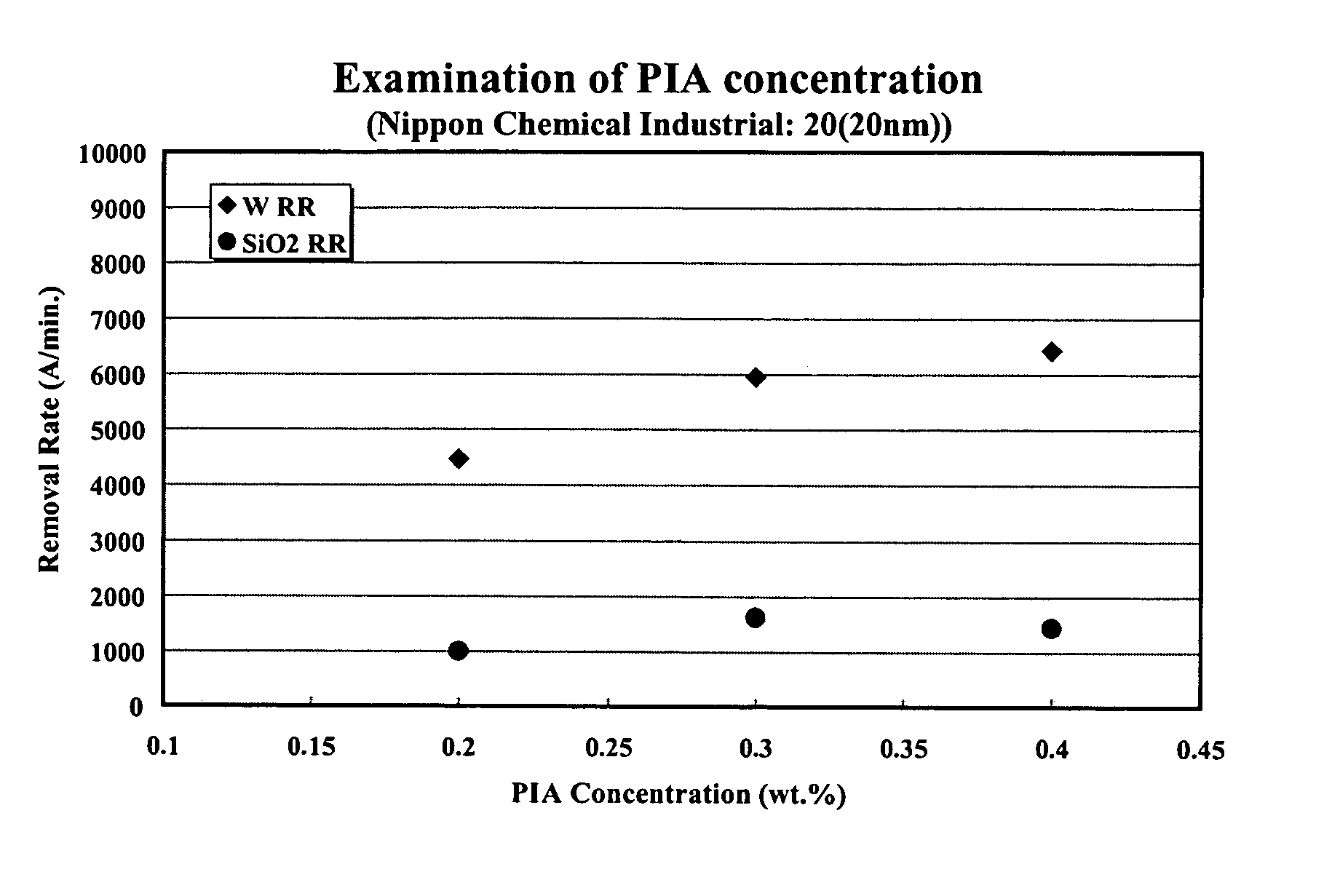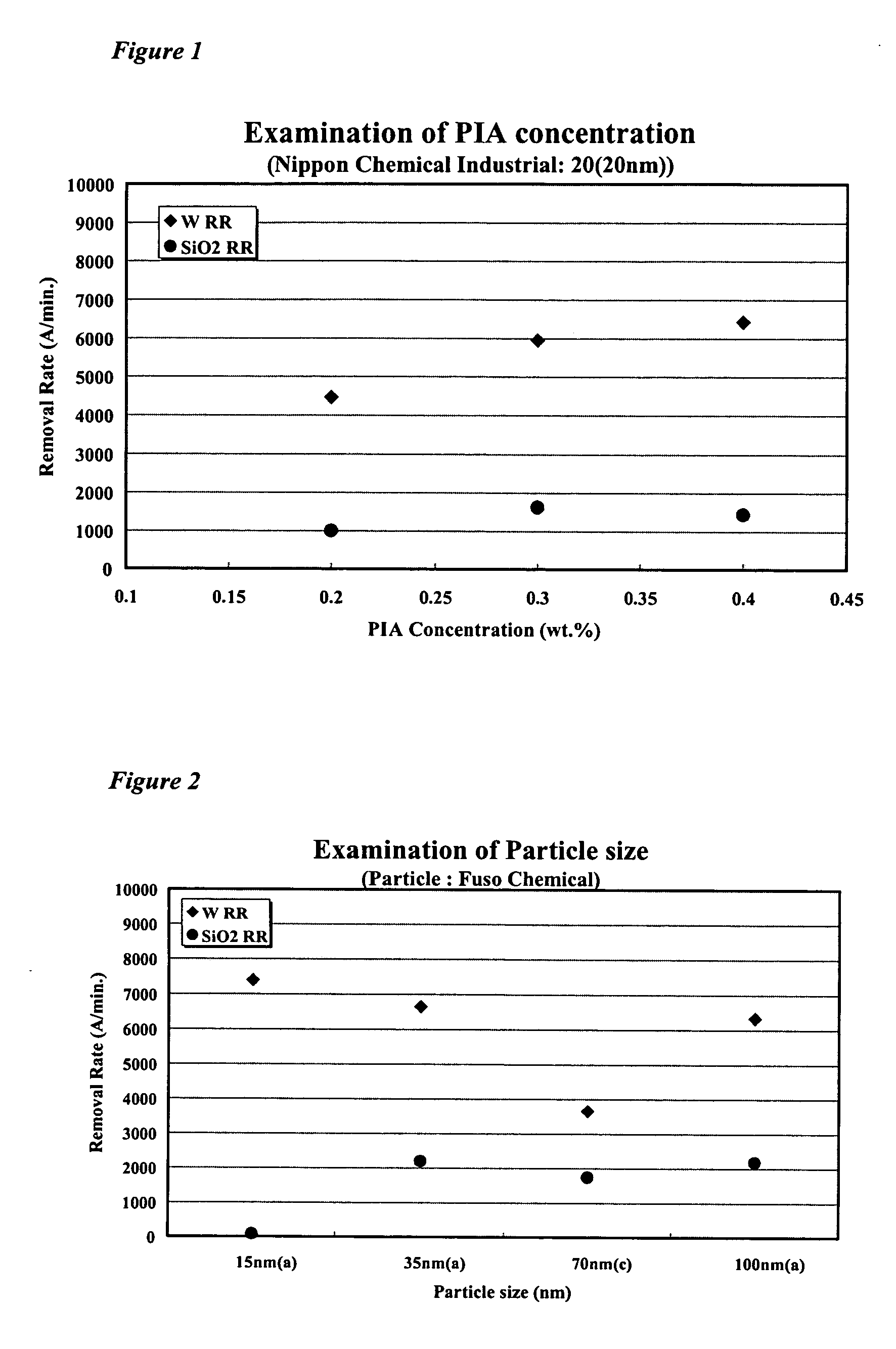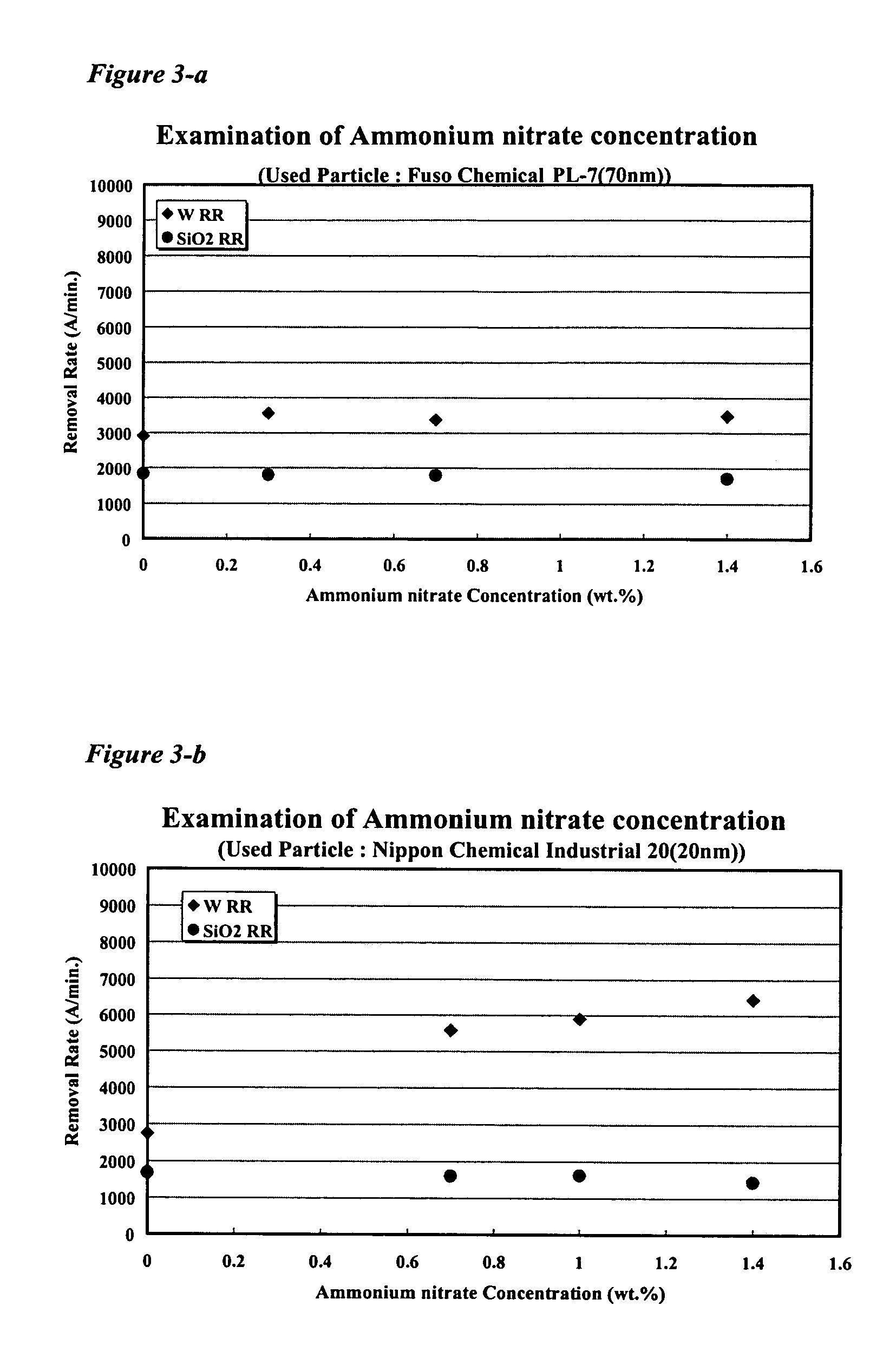Polishing method to reduce dishing of tungsten on a dielectric
a technology of tungsten and dielectric, applied in the direction of polishing compositions with abrasives, manufacturing tools, lapping machines, etc., can solve the problems of affecting subsequent processing, affecting the removal selectivity, and affecting the removal effect of tungsten, so as to reduce the dishing of tungsten. , the effect of reducing the selectivity
- Summary
- Abstract
- Description
- Claims
- Application Information
AI Technical Summary
Problems solved by technology
Method used
Image
Examples
examples
[0067] Many of the example were discussed above in relation to FIGS. 1, 2, and 3a-b in the sections above. FIG. 1 is a graph showing the removal rate of tungsten and of dielectric material as a function of PIA concentration. Polishing conditions were as shown in Table 1. The particle size of colloidal silica in the compositions used in this test was 20 nm, and each example contained about 4.7 weight percent silica. The PIA concentration was varied from about 0.1 weight percent to about 0.4 weight percent, and results showed increasing tungsten removal rates with increasing periodic acid content.
[0068]FIG. 2 is a graph showing the removal rate of tungsten and of dielectric material as a function of colloidal silica particle size. Polishing conditions were as shown in Table 1. The PIA concentration in these tests was a constant 0.4 weight percent. The concentration of colloidal silica was 3.7 weight percent in the first run, but 4.7 weight percent in the remaining runs. The colloidal...
PUM
| Property | Measurement | Unit |
|---|---|---|
| polishing pressure | aaaaa | aaaaa |
| size | aaaaa | aaaaa |
| size | aaaaa | aaaaa |
Abstract
Description
Claims
Application Information
 Login to View More
Login to View More - R&D Engineer
- R&D Manager
- IP Professional
- Industry Leading Data Capabilities
- Powerful AI technology
- Patent DNA Extraction
Browse by: Latest US Patents, China's latest patents, Technical Efficacy Thesaurus, Application Domain, Technology Topic, Popular Technical Reports.
© 2024 PatSnap. All rights reserved.Legal|Privacy policy|Modern Slavery Act Transparency Statement|Sitemap|About US| Contact US: help@patsnap.com










